Panama is a natural marvel.
Few places on earth offer the wildlife-watching, close-to-nature experiences you find here.
This country’s ecological riches are thanks to volcanic activity that took place more than 3 million years ago, when the Isthmus of Panama and Central America arose. This formed a land bridge between South and Central America that, in the millennia to follow, creatures of all descriptions have used to migrate from north to south and vice versa.As a result, Panama is one of the most biodiverse places on earth, with many species found here and only here.
This country has more endemic species even than Costa Rica.
Panama is a land of jaguars, pumas, ocelots, whales, and sharks… a land where you can find animals with fabulous names, including the nine-banded armadillo, the resplendent quetzal, and the limosa harlequin frog… a place where bats eat fish and frogs are poisonous…
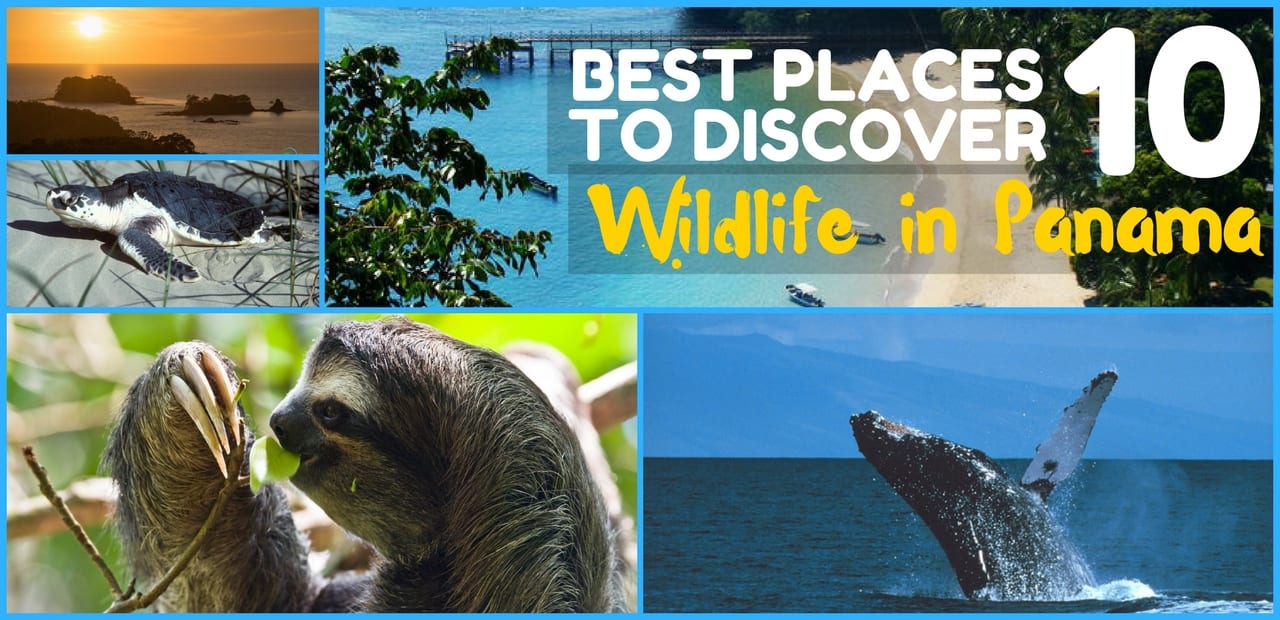
If you love birds, you’ll never want to leave.
And, of course, Panama has sloths.
I’ll never forget the first time I saw a sloth in the wild (Bucket list: Tick!).
Off on a spontaneous Saturday morning trip up to Gamboa, a friend and I decided to turn up the dirt road on the way to the Panama Rainforest Discovery Centre.
This is a beautiful spot, dripping in the densest rain forest.
There is something mystical about rain forests. The way they smell… the fact that you just know all kinds of creatures are hiding in there, like little secrets waiting to be discovered…
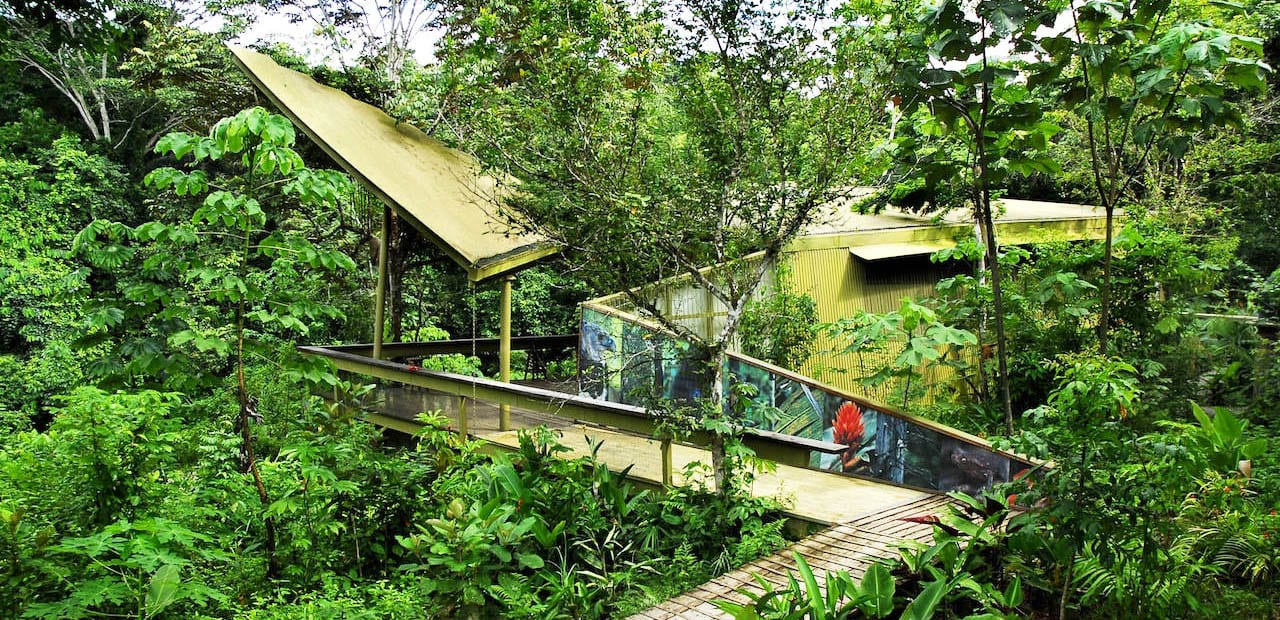
I had the window down, wondering where to point my camera first, when something dashed in front of the car. We stopped, and I got out to take a closer look.
It was a coati, a member of the raccoon family. I never like to get too close to wild animals and have a healthy respect for their space, but it didn’t seem to mind my presence as I stood there, quietly, just observing it snuffling away in the leaf litter, digging for grubs and other tasty morsels.
One click of my camera sent it scurrying into the undergrowth… and that was the end of my photo opportunity.
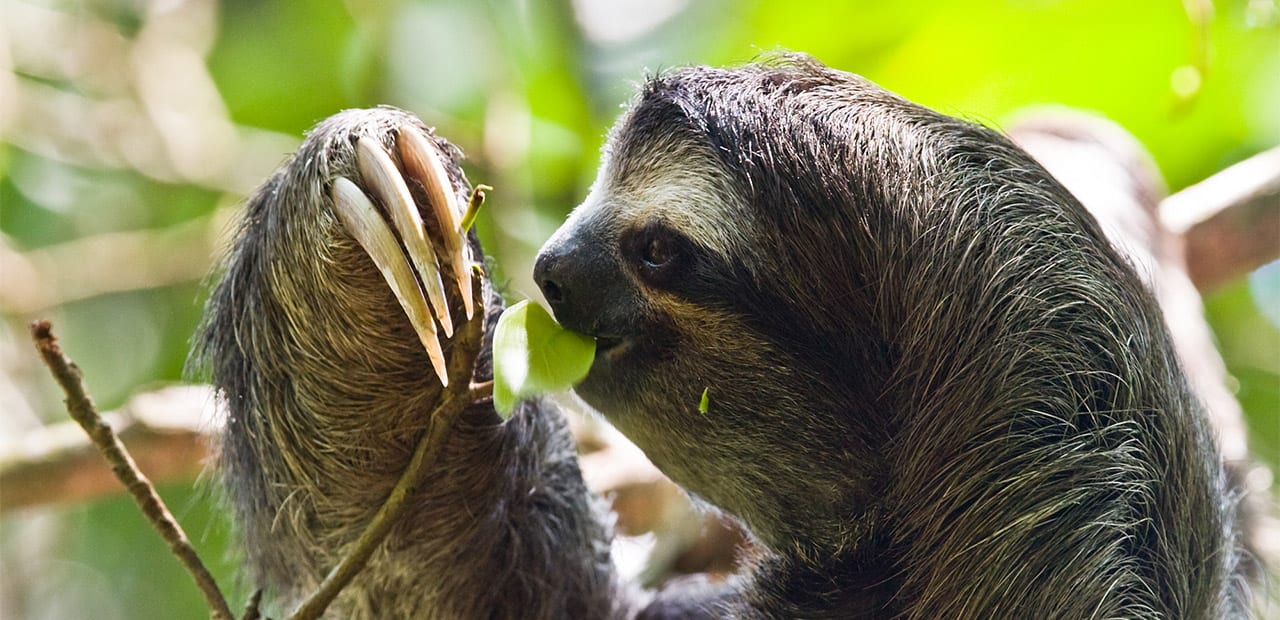
Then—I spotted it. At the top of the forest canopy: A sloth.
If it hadn’t been moving, I would have missed it. Probably would have mistaken it for a bird’s nest. But there it was, climbing down a tree likely on the way to answer its weekly call of nature on the forest floor.
Seeing animals in a zoo is one thing. But for a nature-lover like me not much compares with the thrill of spotting wild animals in their natural habitats.
That is what brought me to Panama. You don’t need to go far from Panama City to experience the wildlife this country has to offer, and the city itself is full of nature… starting with its bird life.
City locals hang sugar-water-filled bird feeders on their balconies to attract feathered characters. They really are characters…
Hummingbirds defend what they consider “their” feeders with extraordinary vigor. For such tiny birds they pack a lot of punch. I’ve seen them chase away birds much larger than themselves with an attitude and aggression you’d expect from a lion defending its prey from a pack of marauding hyenas.
Woodpeckers, parakeets, and brilliantly colored sunbirds in shades of blue, purple, and red are also attracted to bird feeders, if they’re brave enough to endure the dive-bombing tactics of the hummingbirds—and you can watch them all from the comfort of your home while sipping a cup of tea.
And that’s not to mention the migration of literally millions of birds of prey that make their yearly trek from the far north all the way down to the plains of Argentina. As they pass by Panama, they give city residents an aerial display second to none.
In 2014 a record-breaking 2 million raptors were counted in the skies above Panama City. In one day.
Look out for this avian spectacular sometime in October or November.
Other best options for a wildlife adventure in this country?
Here are our top 10 picks:
Humpback Whale Migration
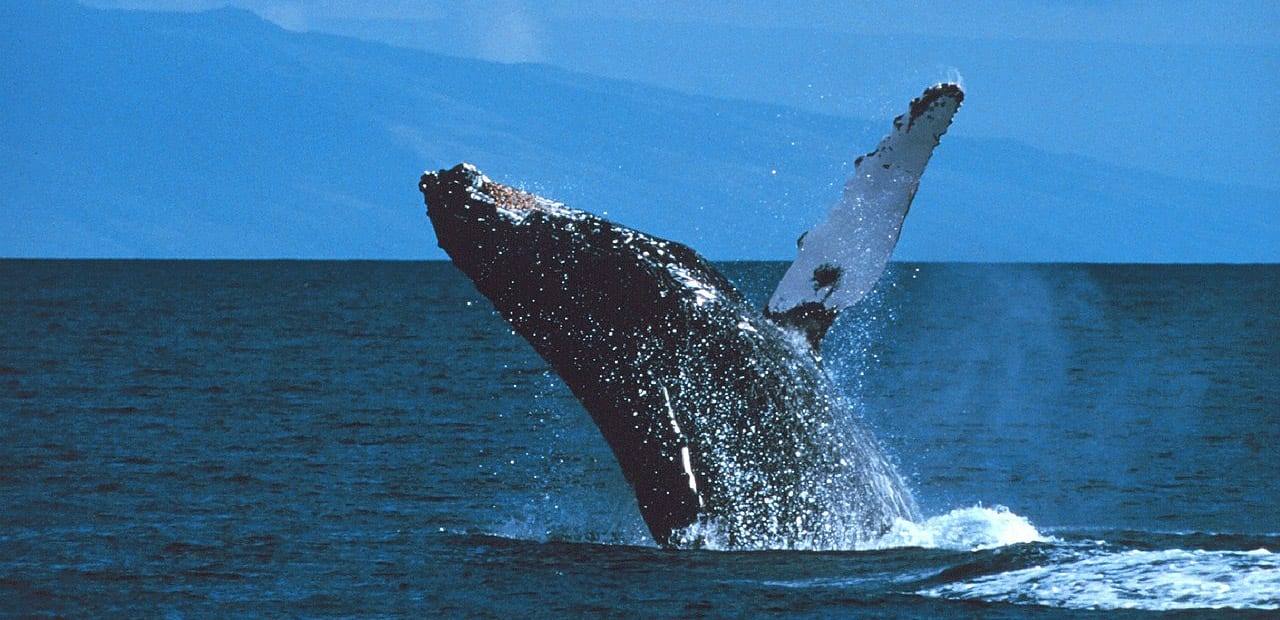
Panama’s annual humpback whale migration is another wildlife event to highlight in red on your calendar. If you’ve got kids or grandkids visiting, you cannot miss this.
Between July and October, the Pacific coast of Panama plays host to humpback whales migrating from both the north (Alaska) and the south (the tip of South America). They meet here in the middle to mate and give birth.
They couldn’t have picked a better spot for their courting rituals… the water’s warm and the weather’s great.
Parque Natural Metropolitano
Need a quick and easy escape from the city? A 10-minute cab ride from the center of town gets you to the tranquil surroundings of the Parque Natural Metropolitano.
Known as the “lungs” of Panama City, this park is an oasis from the city’s hustle and bustle. Bring your walking shoes, pick a trail, and just breathe in the beautiful, fresh, rain forest air.
There’s a lookout point where you can snap a picture of the city skyline framed by the rain forest. If you’re lucky you might spot a sloth or titi monkey in the process.
Summit Botanical Gardens And Zoo
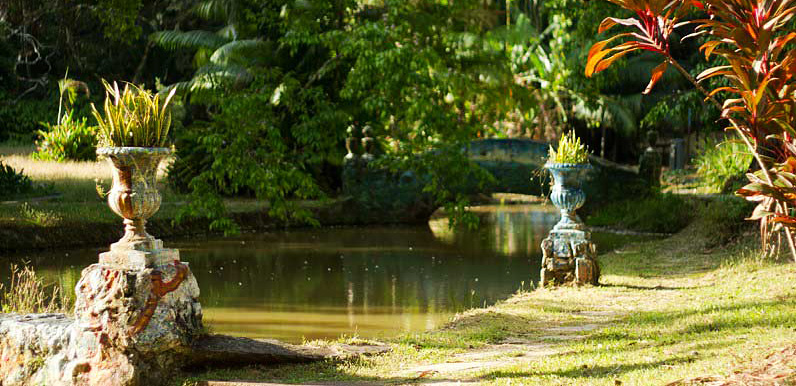
Don’t expect the likes of the San Diego Zoo when visiting the Summit. It’s small but absolutely beautiful.
The Summit was begun in 1923 to introduce tropical plants from around the world; today, more than 15,000 species can be found here.
Pipeline Road, Parque Nacional Soberanía
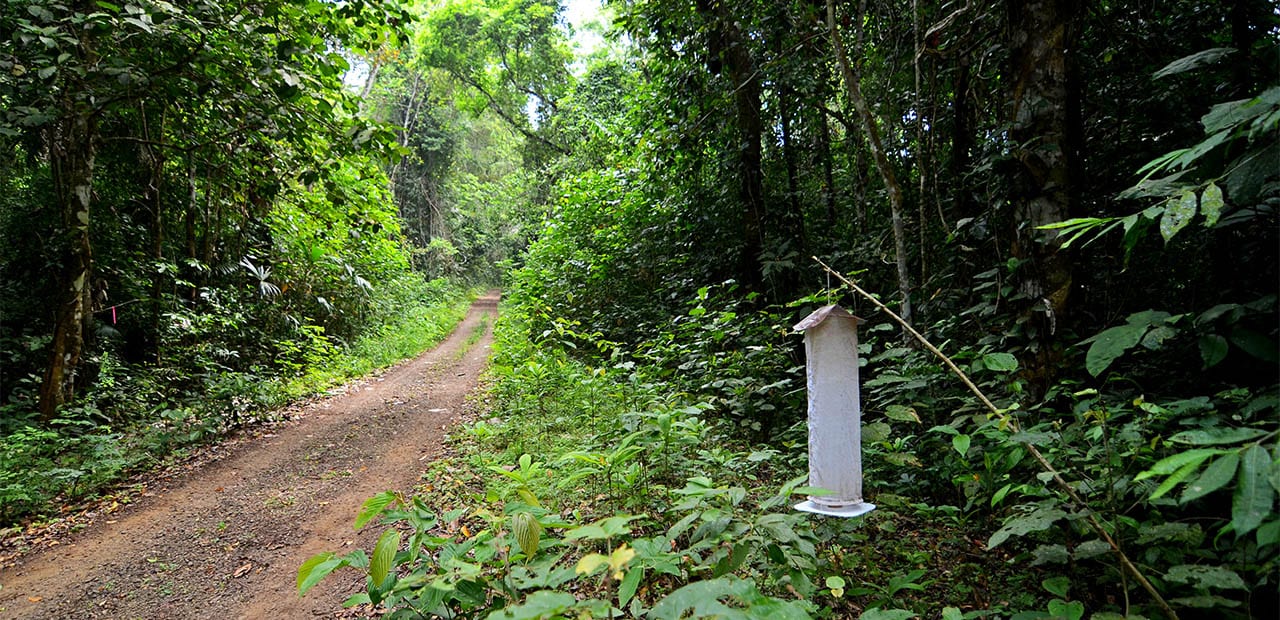
This park, one of the world’s premier bird-watching destinations, is only a short drive from Panama City, just past Summit Gardens.
Visit early morning for a chance to spot a toucan, a fasciated antshrike, a rufous motmot, a blue-headed parrot, and others of the more than 500 bird species that have been recorded in the area.
If you’d like to do more than visit, you could become a bird-counting volunteer.
Gatún Lake And Barro Colorado
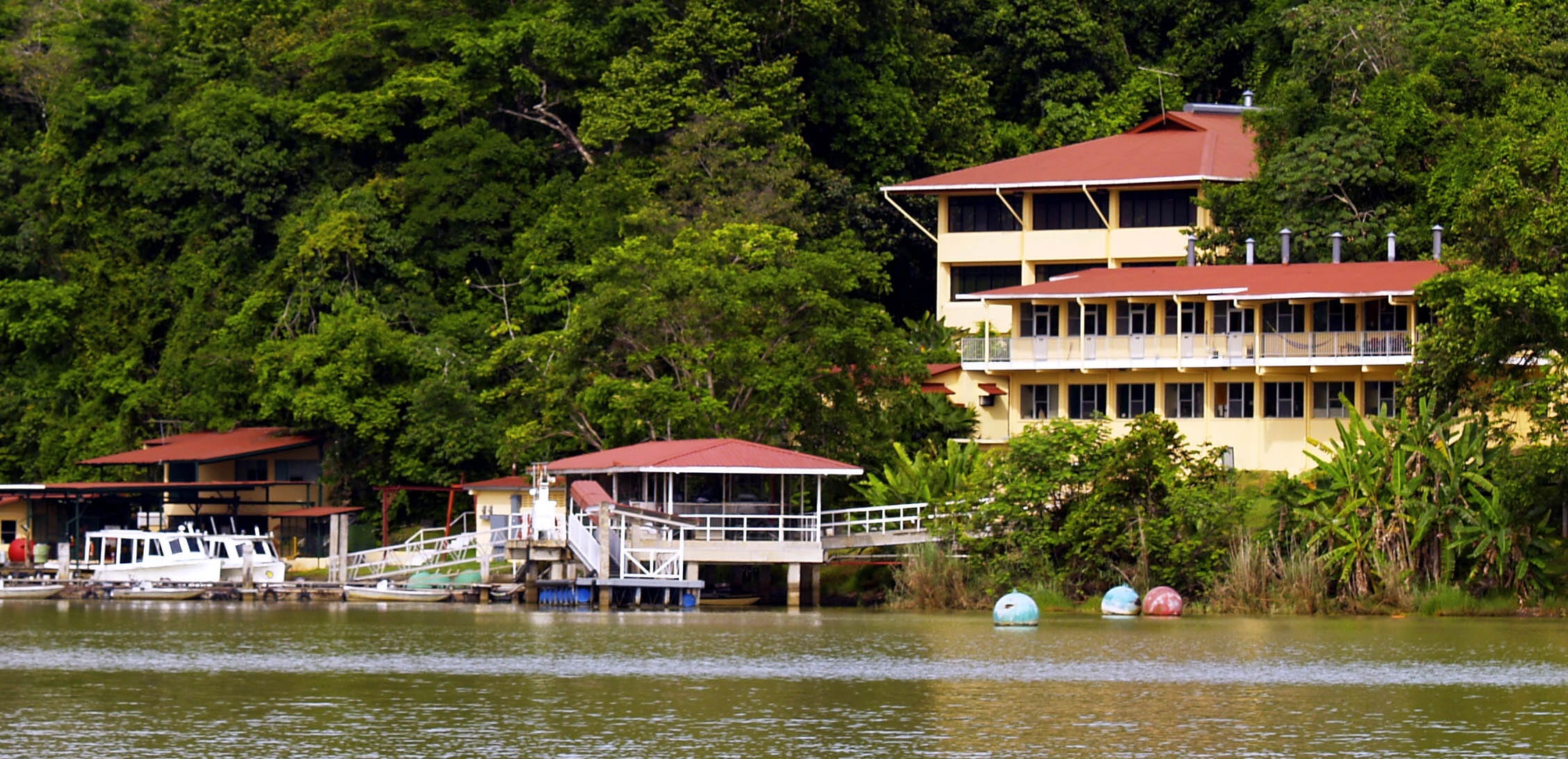
When the Panama Canal was created, the Chagres River was dammed up and what was left was the astonishingly wild Gatún Lake. In the middle of this lake is Barro Colorado, a 15-square-kilometer island that’s managed and run by the Smithsonian Tropical Research Institute (STRI) as a biological research station.
The best part? You can visit for a day tour, which includes your transport from Panama City, and they even throw in lunch. It’s definitely worth the trip, as an expert guide will accompany you on a walking trail, pointing out things you’d miss on your own.
The walk takes about three hours, and you’re likely to see some of Panama’s most charismatic and entertaining animals: monkeys! Barra Colorado is home to spider monkeys, white-faced monkeys, Geoffrey’s Tamarins, howler monkeys, and night monkeys.
Go Batty
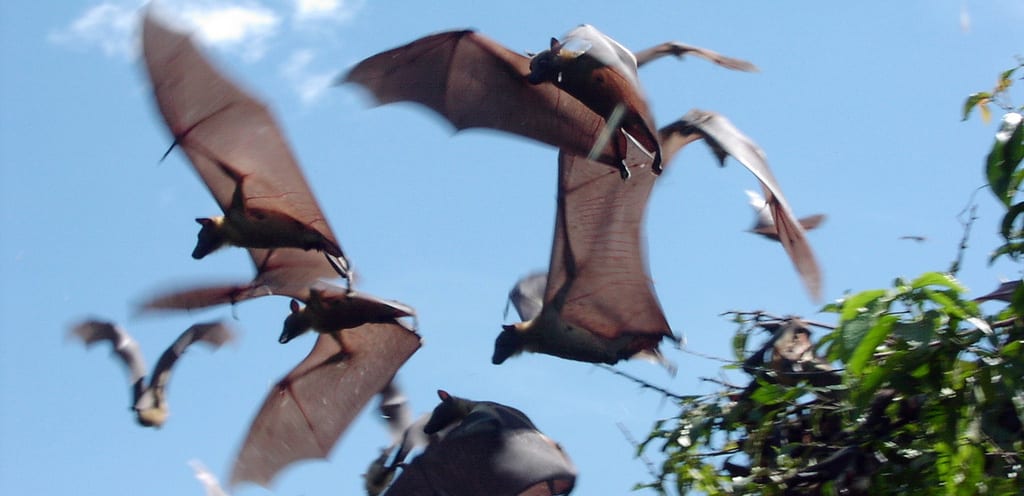
The first Sunday evening of every month (weather permitting), you can join a team of scientists from the Smithsonian Tropical Research Institute on a “bat tour” on Barro Colorado Island.
Some of the most misunderstood creatures on our planet, bats are fascinating and valuable. If you think Panama has a mosquito problem now, imagine what the mosquito population in this country would be without bats.
This is one more place where Panama breaks a wildlife record: Barro Colorado Island is home to more than 74 species of the flying mammals.
Nesting Turtles On Isla De Cañas
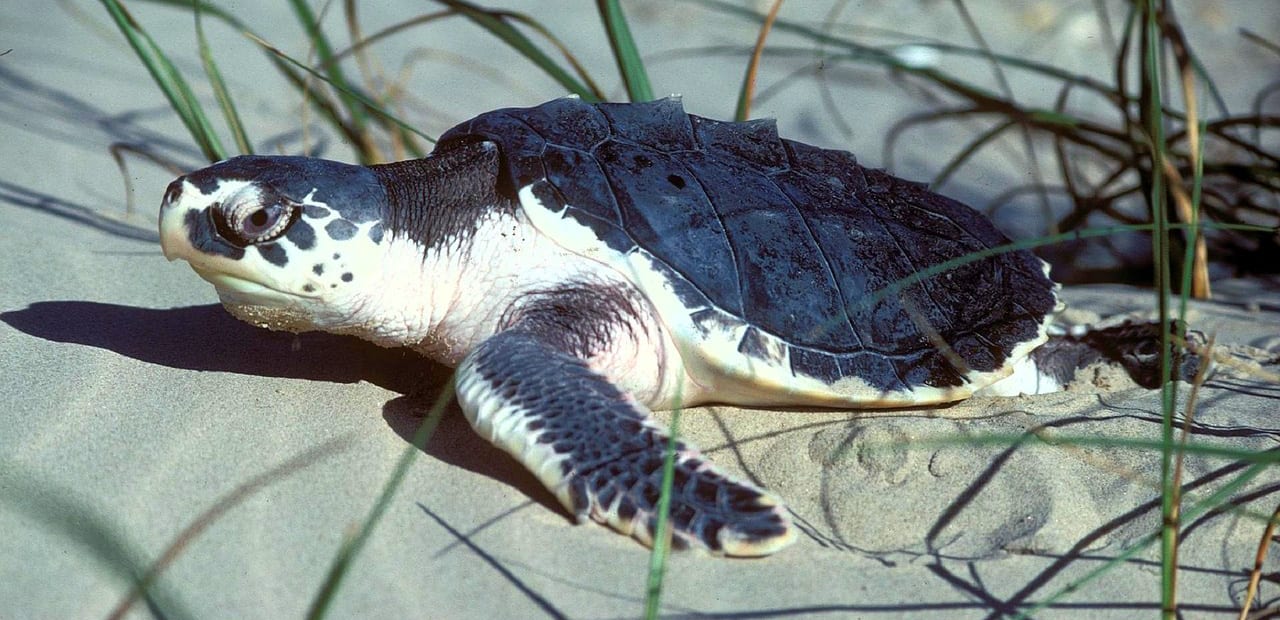
If you’re in the Azuero Peninsula between July and September, you might be fortunate enough to see the thousands of olive ridley sea turtles who come to shore to nest and lay eggs on Isla de Cañas.
The island is one of only five places in the world where this species nests in such huge numbers—up to 50,000 have been recorded in previous seasons.
Seeing the turtles is a nighttime adventure, and you’ll have to hire a guide. Bright lights affect turtles so flashlights and flashing cameras are a big no-no. This is one time you’ll have to take mental pictures.
Boquete Cloud Forests
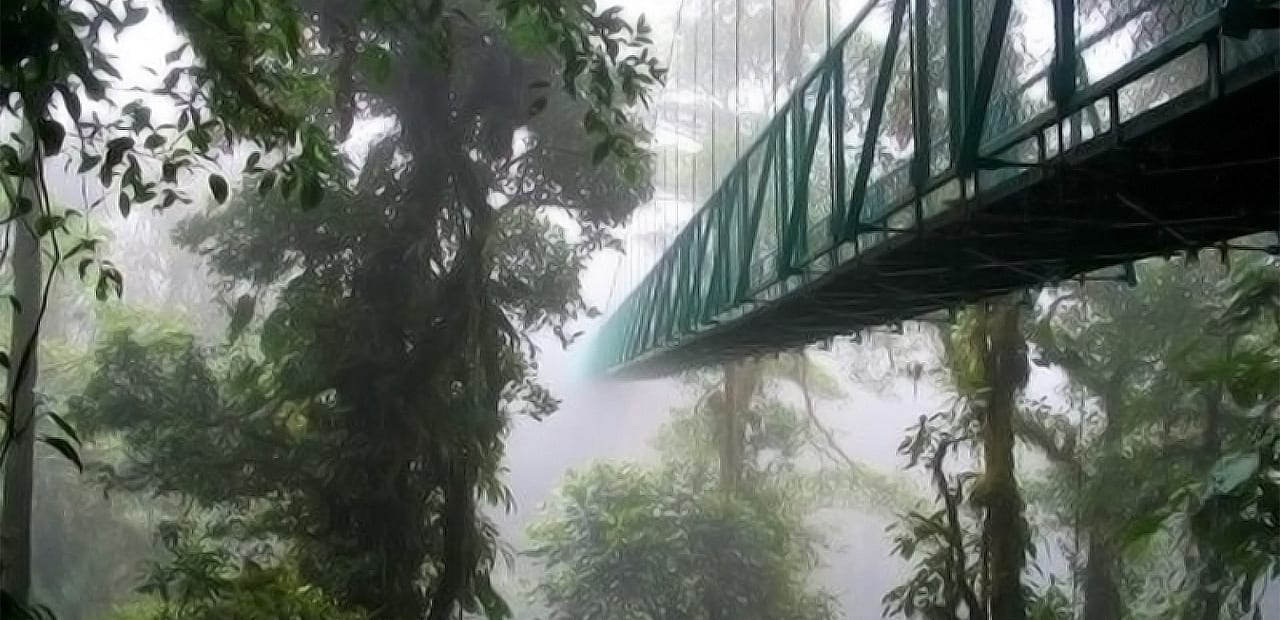
Boquete, in Panama’s Chiriquí province, is the place you’re most likely to spot the elusive resplendent quetzal so prized by birders.
Quetzals are the stuff of legend and folklore, seen as a symbol of freedom. It’s believed that these birds will not survive if held in captivity.
Boquete is the best place in the whole of Central America to catch a glimpse of one of them. Besides that, the scenery here is spectacular—there’s nothing like watching the mist rolling in over the endless green mountains covered in dense cloud forest.
Isla De Coiba, The Galapagos Of Panama
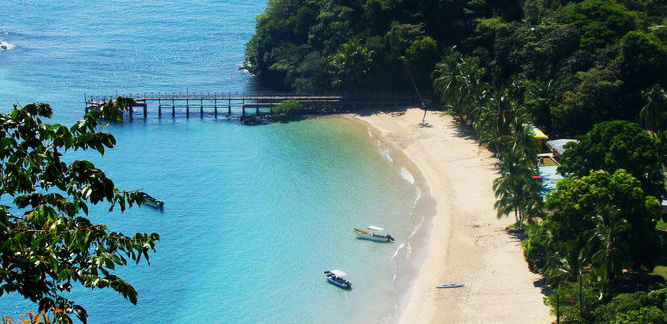
If diving with sharks and rays is your idea of adventure, Isla de Coiba, off the coast of Veraguas province, will not disappoint.
I bumped into a friend recently who’s gone scuba diving just about everywhere in the world, so his “I just had the best dive of my life” really got my attention. He’d just returned from Isla de Coiba, where, in 3 feet of water, he’d found himself surrounded by white-tip sharks and eagle rays.
Declared a National Park in 1991, this former penal colony was virtually devoid of human interference for years, meaning its wildlife, both in its impenetrable jungles on land and the marine life surrounding it, was left undisturbed. It’s now known as the “Galapagos of Panama.”
If sport fishing is your thing, it doesn’t get better than the waters off Isla de Coiba. Remember your permit.
Darién National Park
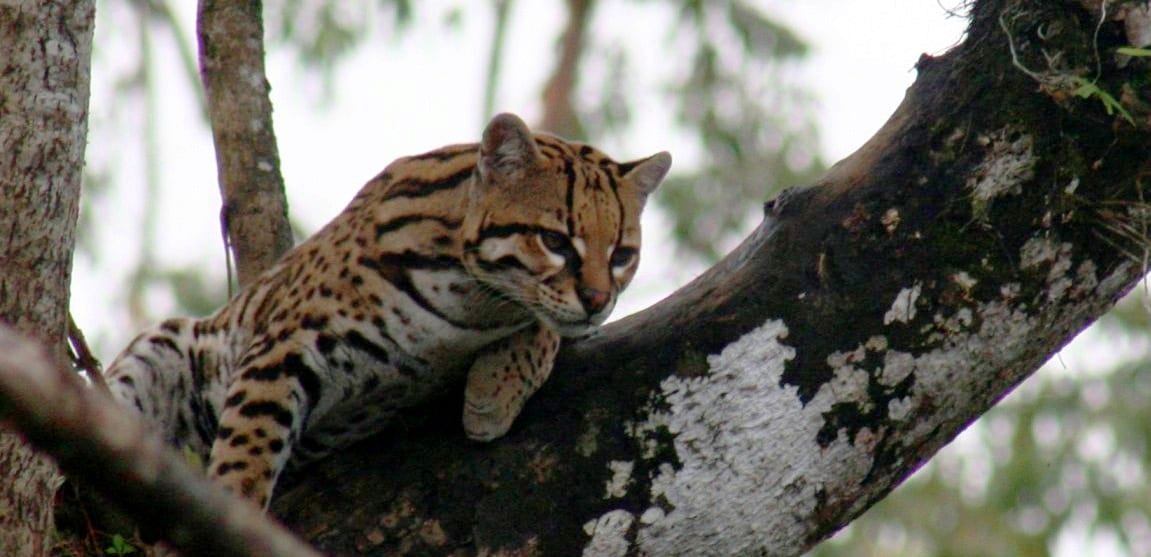
While Panama has no shortage of national parks, one stands head and shoulders above the others. The “big daddy” of them all, the Darién National Park, is not for the faint-hearted.
Bordering Colombia, this almost impenetrable wilderness is most famous for its reputation as a safe haven for guerillas and narcotics traffickers. That aside, the Darién will give any intrepid wildlife-crazy adventurer the experience of a lifetime.
To enter the park, you must apply for a permit and you must travel as part of a tour or with a local guide.
It’s not cheap or easy but definitely rewarding.
The Darién is home to an impressive 169 species of mammals, including endangered Central American tapirs, jaguars, giant anteaters, plus more than 530 species of birds, including huge flocks of macaws and one of the largest populations of harpy eagles.
The scenery is breathtaking.
Plus, you walk away with serious bragging rights. Very few can lay claim to having braved the Darién.
Kathleen Peddicord
